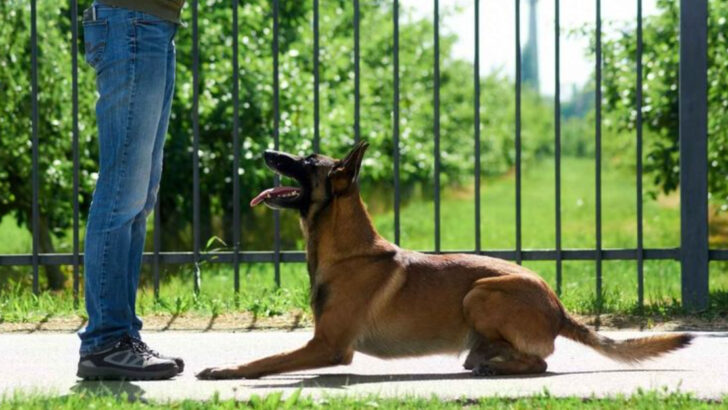Aggressive dogs can strike fear in even the most experienced pet owner. But here’s the truth: they don’t have to control the situation.
With the right tools, patience, and understanding, you can turn things around.
Aggression is often a sign of fear, discomfort, or anxiety. Understanding the root causes is half the battle.
Let’s explore 13 powerful, real-world strategies to help you regain control, calm your dog, and rebuild trust. Your relationship with your dog doesn’t have to be defined by aggression—it’s time to change the narrative.
Understand the Trigger

Identifying the trigger for your dog’s aggression is crucial in addressing the behavior effectively. It could be fear, territorial instincts, or frustration. Spend time observing your dog to understand what prompts the aggressive actions. Consider consulting a professional dog trainer if necessary. They can provide insights into specific triggers that may not be immediately obvious. By recognizing what causes the aggression, you can begin to work on methods to manage and reduce it. This understanding is the first step in developing a customized plan to help your dog feel more secure and less reactive in triggering situations.
Use Positive Reinforcement
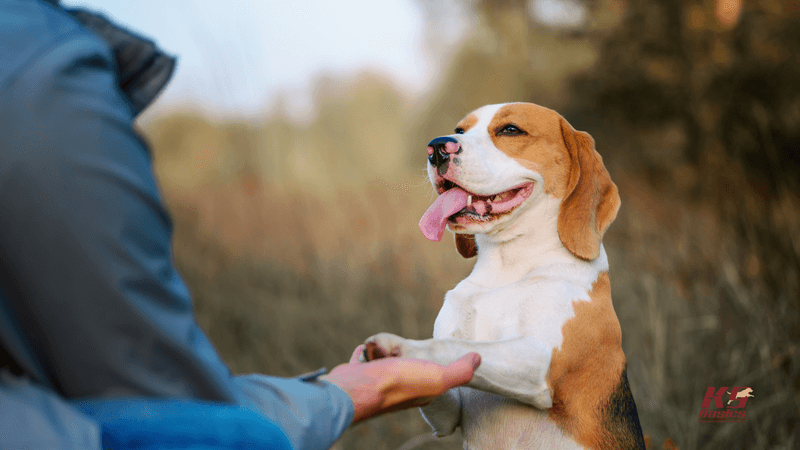
Positive reinforcement involves rewarding your dog for good behavior, encouraging a calm demeanor. When your dog responds positively to a command or remains calm in a situation that typically triggers aggression, reward them with treats or praise. This method builds a positive association with non-aggressive behavior. Ensure the reward is immediate to strengthen the connection between the behavior and the reward. Over time, your dog will learn that calm behavior leads to positive outcomes, reducing the likelihood of aggression. It’s a compassionate way to encourage desired behaviors without intimidation or punishment.
Maintain a Calm Demeanor
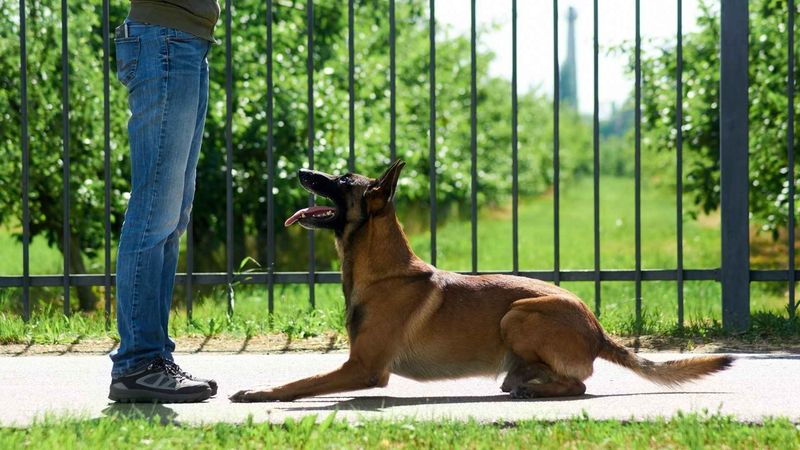
Dogs are sensitive to their owners’ emotions, and maintaining a calm demeanor can help soothe an aggressive dog. If you remain composed, your dog is more likely to mirror that calmness. Practice deep breathing and speak in a soft, steady voice when your dog shows aggression. Avoid shouting or sudden movements, which can escalate the situation. Your calm presence serves as an example for your dog, showing them that there is no need to react aggressively. This method helps in creating a tranquil environment, making it easier to implement other behavioral strategies.
Provide Adequate Exercise
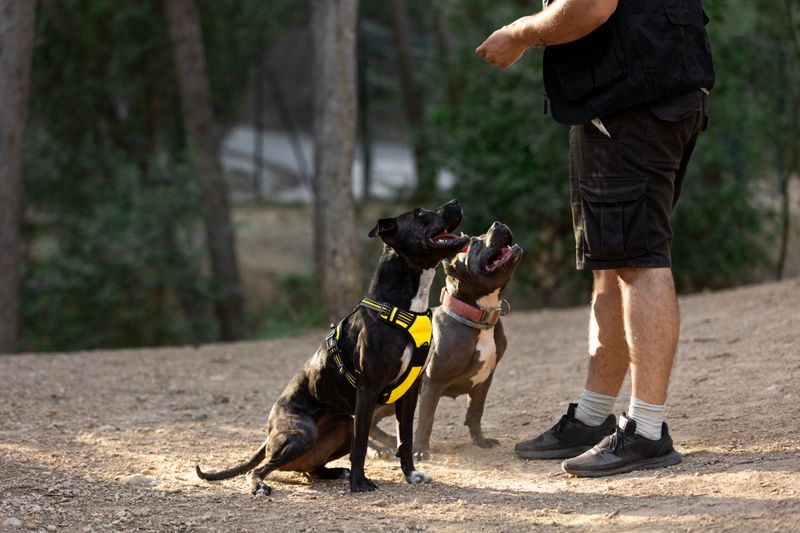
Regular exercise is essential for a dog’s physical and mental well-being. An energetic dog with pent-up energy might exhibit aggression due to frustration. Providing adequate exercise through daily walks, runs, or play sessions helps in releasing excess energy, reducing the chances of aggressive behavior. Tailor the exercise to your dog’s breed, age, and health, ensuring it’s engaging and safe. Exercise not only tires your dog physically but also stimulates their mind, providing a positive outlet for their energy. A well-exercised dog is typically calmer and less prone to aggressive outbursts.
Socialization Training
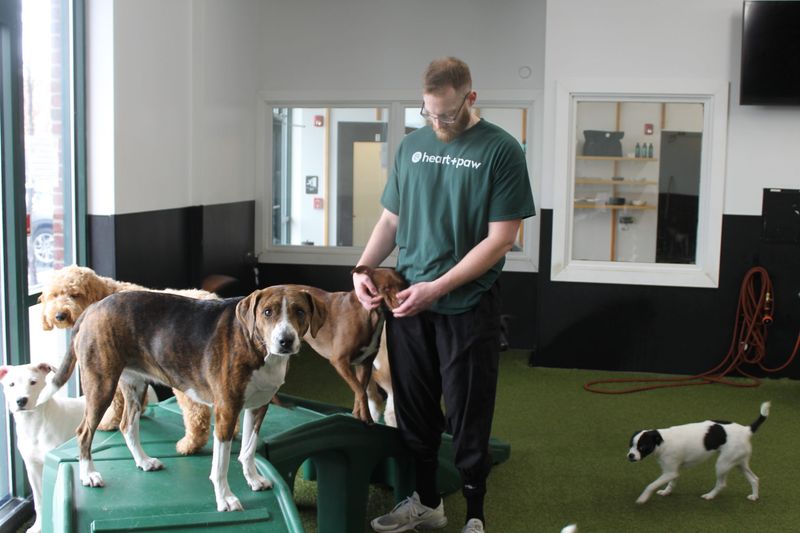
Socialization is key in preventing and managing aggression. Gradually introduce your dog to new environments, people, and other dogs under controlled conditions. Begin with calm, familiar settings and slowly increase the complexity as your dog becomes more comfortable. Supervise interactions to ensure they are positive. Proper socialization teaches your dog to react calmly and confidently, reducing fear-based aggression. If your dog is particularly aggressive, consider enrolling in a socialization class led by a professional. These sessions provide a structured environment for your dog to learn essential social skills safely.
Create a Safe Space

Creating a dedicated safe space for your dog can be beneficial in calming aggressive behavior. This space should be quiet, comfortable, and free from stressors. Fill it with your dog’s favorite toys and a soft bed. Ensure it’s a place they enjoy spending time in, where they can retreat when they feel overwhelmed. Soft, calming music can also aid in creating a serene environment. This sanctuary provides your dog with a refuge where they can relax and feel secure, helping to reduce stress-induced aggression. It’s a simple yet effective way to promote calmness.
Desensitization Techniques
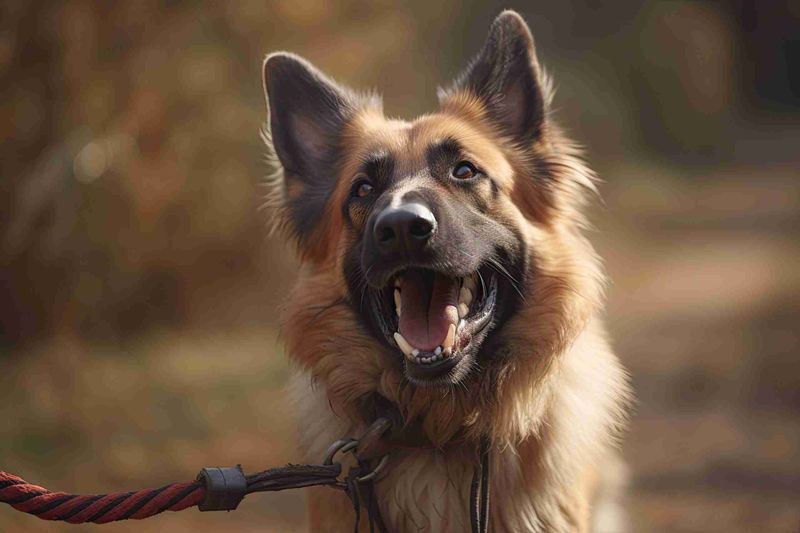
Desensitization involves gradual exposure to the source of aggression at a level that doesn’t provoke a reaction. Begin by introducing the trigger at a distance where your dog remains calm, slowly decreasing the distance over time. Pair this exposure with positive reinforcement, rewarding your dog for remaining calm. This method requires patience and consistency, as it can take weeks or even months to achieve results. The goal is to reduce the dog’s sensitivity to the trigger, eventually leading to a neutral or positive response. Desensitization helps in managing aggression by fostering tolerance and acceptance.
Consult a Professional
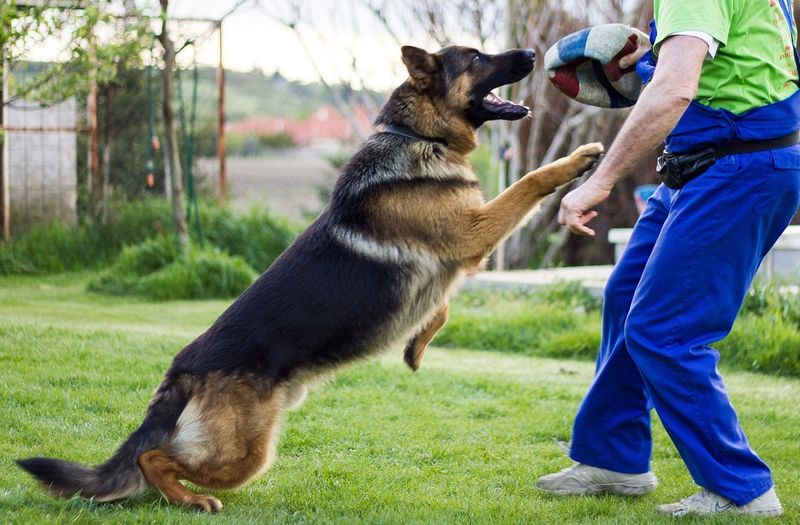
If your dog’s aggression is severe, consulting a professional may be necessary. Veterinarians, animal behaviorists, or certified dog trainers can provide expert guidance tailored to your dog’s specific needs. They can assess underlying medical issues that might contribute to aggression and recommend appropriate interventions. Professional guidance can lead to a more effective behavior management plan, incorporating advanced techniques and addressing issues beyond what an owner can typically handle alone. Seeking professional help ensures that you’re taking informed steps to improve your dog’s behavior, promoting a healthier relationship between you and your pet.
Use Calming Products

Calming products, such as pheromone diffusers, calming sprays, and specially designed toys, can aid in reducing aggression. These products work by creating a relaxing environment through scent or interaction. Pheromone diffusers mimic the natural calming pheromones produced by nursing dogs, which can soothe your aggressive dog. Select products based on your dog’s preferences and needs, ensuring they are safe and vet-approved. While calming products are not a standalone solution, they can be a helpful addition to a comprehensive behavior management plan, providing extra support in stressful situations.
Implement Obedience Training
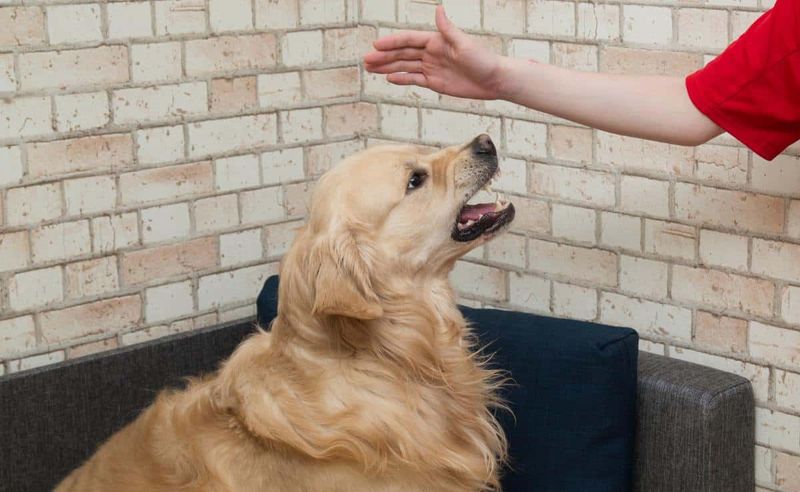
Obedience training is vital in managing an aggressive dog, providing structure and discipline. Training commands such as sit, stay, and leave it can redirect aggressive behaviors. Consistency and patience are key, as regular practice reinforces good behavior. Use positive reinforcement to encourage your dog, making training a positive experience. Enroll in a training class if needed, where professional trainers can offer guidance and support. Through obedience training, your dog learns to respond to commands, increasing their confidence and trust in your leadership, ultimately reducing aggression.
Limit Exposure to Stressors
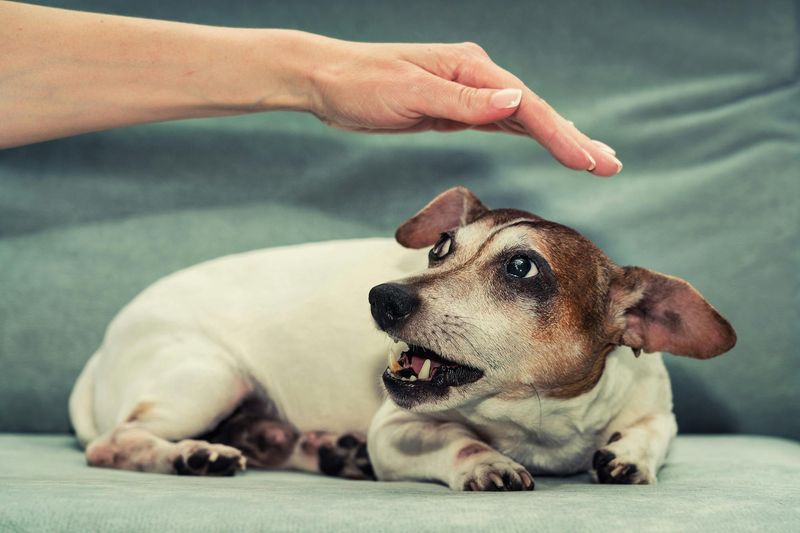
Limiting exposure to stressors that trigger aggression can be beneficial. Identify common stressors in your dog’s environment, such as loud noises, unfamiliar visitors, or crowded places. Manage these by creating a calm home atmosphere and avoiding high-stress situations. If avoiding stressors entirely isn’t possible, gradually introduce them in a controlled manner, pairing with positive reinforcement. This approach minimizes stress and allows your dog to adapt at their own pace. By managing exposure, you prevent aggressive incidents and help your dog remain calm and composed, promoting a more peaceful coexistence.
Use Body Language Wisely
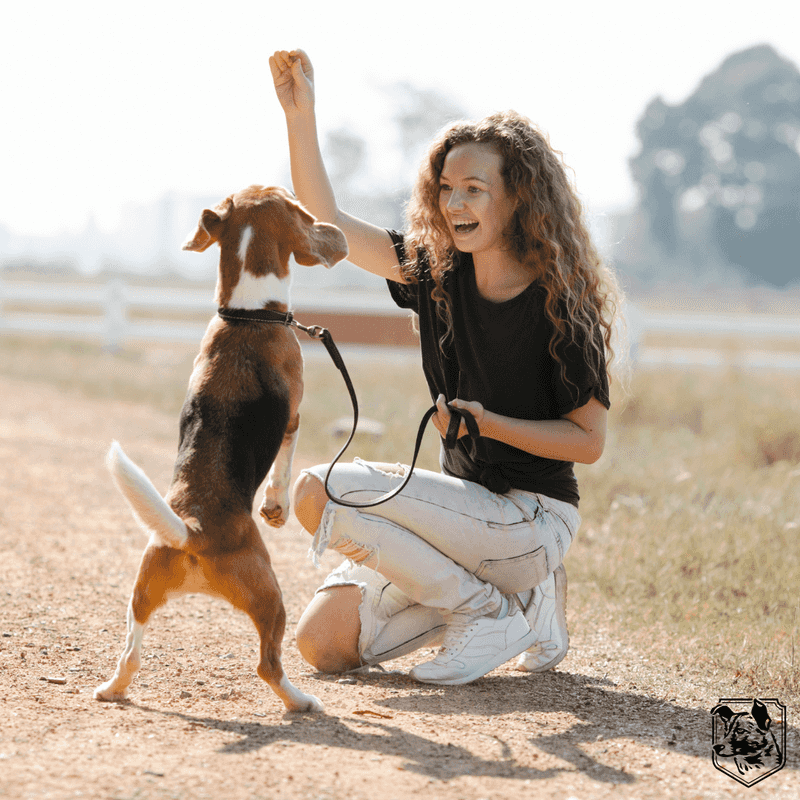
Understanding and utilizing body language effectively can influence your dog’s behavior. Dogs are attuned to human body language, and your posture can either escalate or de-escalate aggression. Stand tall, remain relaxed, and avoid direct eye contact, as this can be perceived as a threat. Use smooth, slow movements to convey calmness and authority. By presenting yourself as a confident leader through body language, you can reassure your dog and diminish aggressive tendencies. This non-verbal communication is a powerful tool in establishing trust and reducing anxiety in your dog.
Stay Consistent

Consistency is key in managing aggression. Dogs thrive on routine, and consistent training, rewards, and boundaries help them understand expectations. Stick to a regular schedule for feeding, walks, and playtime, providing structure and predictability. Consistency in commands and rewards reinforces learning, helping your dog associate calm behavior with positive outcomes. Inconsistency can lead to confusion and anxiety, exacerbating aggression. By maintaining a consistent approach, you build trust and security, creating an environment where your dog feels safe and understood. This stability is foundational in calming an aggressive dog effectively.

